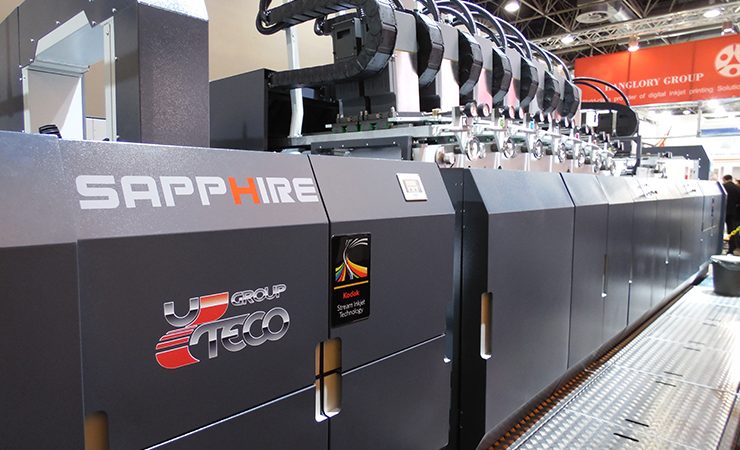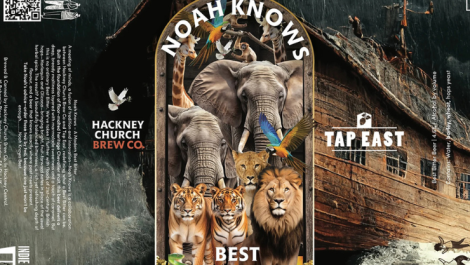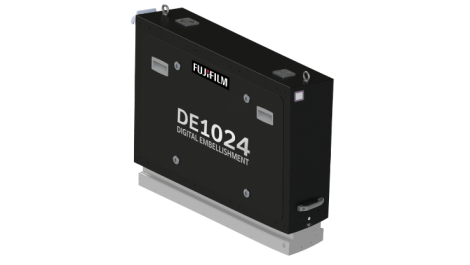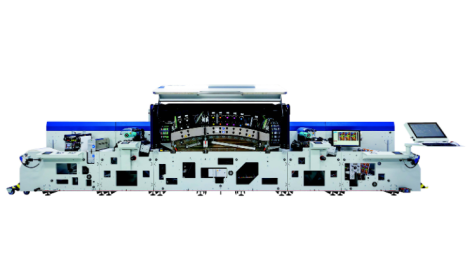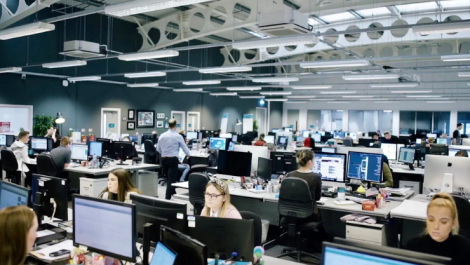Digital Labels & Packaging looks back on the role drupa has played in the development of the digital package printing industry over the magazine’s first 10 years in print, and reflects on what might of been had the 2020 edition gone ahead as planned.
As an event, drupa has been running since the early 1950s. Since then, it has played host to a number of technology dawns and innovation thresholds that have signalled new impetus for the printing industry, especially packaging.
Digital has certainly been a talking point at more recent events, and since the first issue of Digital Labels & Packaging was published in 2010, the 2012 and 2016 shows have been notable for the amount of digital package printing developments presented. 2020 was thought by many to be a watershed year for digital package printing technology, and from what is known, manufacturers weren’t going to disappoint. Of course, drupa has now been rescheduled for April 2021, but that doesn’t mean there’s not plenty to be excited for right now, as evidenced here.
2012
Cast your mind back to 2012, and it’s likely that the big standout for many will be the Landa stand, which housed the company’s own amphitheatre where daily shows were standing room only as Benny Landa made his return to drupa with a series of nanographic printing presses. The presses themselves featured an innovative way of printing, jetting inks onto a rubber belt that then transferred the image to the substrate, promising unparalleled widths and speeds for digital package printing applications. The novel press design, with a sliding touchscreen wall along one side, garnered further attention. This design was rethought out not long after based on feedback from the market, while the technology itself has taken almost a two further drupa cycles to gain traction in the market.
Over the same period, the HP Indigo Series 4 presses, which also debuted at drupa 2012, have picked up business at a much more rapid pace. The HP Indigo 20000 and 30000 debuted, to introduce a new range of 30in digital package printing technologies for flexible packaging and folding cartons. Digitally printed folding cartons were a central theme for Xeikon, which launched its Folding Carton Suite. Based on a 3000 Series dry toner press, this allowed printing on up to 350g/sqm board on a web width from 200-516mm.
Also in the realm of digital folding cartons at drupa 2012 sat Highcon and Scodix. The Israel-based businesses sought to innovate post-press – finishing and embellishment in the case of Scodix, and converting for Highcon. The latter’s Euclid digital cutting and creasing system promised to alleviate bottlenecks in the production of digitally printed folding cartons.
Domino’s N600i inkjet digital press, the predecessor to its now near-ubiquitous N610i, was closing in on a commercial launch. N600i was a four-colour digital inkjet label press with a native 600dpi print resolution as well as up to four greyscale levels and a 6pL drop size Operating at speeds up to 75m/min, it offered the ability to print up to 1500sqm/h for cost-effective long production runs. Epson’s SurePress and Screen’s Truepress Jet were further important inkjet digital printing developments. The Epson SurePress L-4033AW was launched as a seven-color inkjet digital label press with white ink to make ‘high-quality, short-run label printing easier and more efficient’, including on clear and metallic substrates. The Screen Truepress Jet L350UV, a single-pass UV inkjet label printing system, offered a linear speed of 50m/min. The Truepress JetSX was claimed as the world’s first inkjet press capable of B2-size sheet-fed printing, and offered an optional feature to print onto substrates up to 23.6mm.
2016
Inkjet digital package printing made a bigger splash at the following drupa. Kodak’s Ultrastream technology was introduced in Dusseldorf that year, with a narrow web concept machine running at 170m/min on paper for labels and also flexibles on a hybrid system developed with Uteco. Heidelberg debuted the now defunct Primefire 106 B1 sheetfed inkjet folding carton press, running Fujifilm Dimatix Samba heads and water-based inks. Fujifilm itself showed a new 540mm-wide UV LED inkjet press for flexible packaging for reverse printing using a new image forming technology. It was claimed to print at up to 50m/min using standard CMYK+W ink colours. Fellow Japanese company, Think Laboratory, entered the sector by announcing a water-based roll-to-roll 540mm-wide inkjet printer for film, the FXIJ-1 Aqua. This ran inks developed by Kao.
From Koenig & Bauer, or KBA as it was still known in 2016, came VariJET 106, powered by Xerox Impika. It was launched as a B1 format sheet-fed inkjet press for printing folding cartons. The press was based on the platform of the Rapida 106 sheet-fed offset press, integrating an inkjet print engine and DFE from Xerox Impika. Modular in nature, custom configurations could include foiling, coating, offset printing and other options as needed. VariJET 106’s rated performance was 4500sph (B1).
Productive, wide format digital package printing was indeed a big topic in 2016. Barberán and its Jetmaster were on show, while the curtain was pulled back on the EFI Nozomi C18000, a single-pass LED press for corrugated packaging with a print speed up to 75 linear m/min. At 1.8m-wide, the EFI Nozomi C18000 had run speeds up to 8100sqm/h and printed on boards up to 1.8 x 3m in size. Double-lane printing enabled full utilisation of the press speed and width, and increased throughput up to 9000 80 x 60cm boards an hour.
On the Konica Minolta stand, AccurioJet KM-1 was introduced, having been announced prior to the previous drupa. KM-1 was a sheet-fed duplex B2 format digital inkjet press, using UV-cured inks, and was also to be sold by Komori under the name Impremia IS29 as a joint venture development. A prototype KM-2 B1 sheet-fed device was presented, although that has since been discontinued.
Komori also worked with Landa to develop the Impremia NS40, a B1 format digital sheet-fed press shown in a simplex configuration with inline coater running aqueous or UV liquids. An optional double delivery for pharmaceutical work automatically detected and diverted rejected sheets.
From HP Indigo was the new HP Indigo 8000 digital press, which promised to double the capacity of the WS6800 and print at up to 80m/ min. Another important development was the quick turnaround of digitally printed flexible packaging with new HP Indigo Pack Ready Lamination system.
Landa showed the updated S10 and W10 nanographic printing presses. Metallography was also shown as a technology demonstration by Landa, integrated into an Omet X6 flexo press. This was claimed as allowing high-quality metallic decoration, at half the cost of traditional hot foil stamping and at full press speed. Metallography has now been developed and rebranded as EcoLeaf under the ownership of Actega.
2020
EcoLeaf was due to be commercialised by subsidiary Actega Metal Print around drupa 2020 as a sustainable technology for creating metallic embellishments. drupa 2020 was also set to see the Komori Impremia NS40 and Koenig & Bauer VariJET 106 technologies furthered. VariJET 106 is now a development between Koenig & Bauer and Durst. Others that were set for another big drupa this year include: Highcon and its updated range for converting tools for corrugated and carton packaging; HP Indigo and its new presses; Landa with its W10 nanographic press for flexible packaging; and Xeikon, with its entry into digital corrugated printing. Bobst and its Mouvent division have updates shortly to be confirmed, while EFI with Nozomi and Konica Minolta/MGI with the B1 AlphaJet could rightly have been expected to be big draws with enhanced capabilities. With such a vast array of ground-breaking technologies there or thereabouts for the digital package printing industry to pore over, there is much for printers and converters to be excited by. At the manufacturer level, some have carried on with the introduction of their new technologies as planned, albeit in a slightly different way, although some have applied the brakes in anticipation of drupa 2021. Some are using the lack of drupa this year as an opportunity to refine and hone their technologies, so when April next year rolls around they are in an even stronger position.
Examples include HP Indigo and the announcement of its Series 5/6 presses – the 120m/min V12 won’t be commercially available until 2022 –, to Windmöller & Hölscher, which is keeping its cards close to its chest regarding its digital printing project that is under development.
For Actega Metal Print, the time afforded to the company by the postponement of drupa 2020 will allow it to ‘go beyond beta,’ according to Dario Urbinati, the company’s chief sales and marketing officer. Specifically, this relates to the development of inkjet technology to print the trigger image as part of the EcoLeaf decoration process.
‘Because we have additional time and the digital technology is ready, we are going into beta testing of it. By the time drupa 2021 happens, beta for digital EcoLeaf will be behind us already. This puts us in a strong position as the digital EcoLeaf solution is a true step forward.’
He adds, ‘Despite the current challenges, we have to keep in mind that one day the coronavirus will be behind us also. The business environment will get more challenging and there will be economic distortion, but it is important that we do not forget in our operational environment that we need to look forward to post-corona times.
‘It is likely these times will be more digital, so for us it is an opportunity to provide a technology that suits this period of time.’
- Read about the latest technological developments in digital label printing here.
- Read about the latest technological developments in digital flexible package printing here.
- Read about the latest technological developments in digital folding carton printing here.
- Read about the latest technological developments in digital corrugated printing here.
- Read about the latest technological developments in finishing and converting here.
This article appeared in the May/June issue of Digital Labels & Packaging; register here to receive Digital Labels & Packaging, for free, both in print and online

